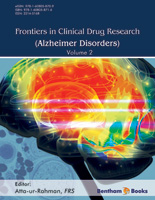
Photo from archive.org
The use of Antiretroviral drugs in treating HIV/ AIDS patients has enormously increased their life spans with serious disadvantages. The virus infection still remains a public health problem worldwide with… Click to show full abstract
The use of Antiretroviral drugs in treating HIV/ AIDS patients has enormously increased their life spans with serious disadvantages. The virus infection still remains a public health problem worldwide with no cure and vaccine for the viral agent until now. The use of nanoparticles (NPs) for the treatment and prevention of HIV/AIDS is an emerging technology of the 21st century. NPs are solid and colloid particles with 10 nm to <1000 nm size range; although, less than 200 nm is the recommended size for nanomedical usage. There are NPs with therapeutic capabilities such as liposomes, micelles, dendrimers and nanocapsules. The particle enters the body mainly via oral intake, direct injection and inhalation. It has been proven to have potentials of advancing the prevention and treatment of the viral agent. Certain NPs have been shown to have selftherapeutic activity for the virus in vitro. Strategies that are novel are emerging which can be used to improve nanotechnology, such as genetic treatment and immunotherapy. In this review, nanoparticles, the types and its characteristics in drug delivery were discussed. The light was furthermore shed on its implications in the prevention and treatment of HIV/AIDS.
Journal Title: Current Drug Discovery Technologies
Year Published: 2020
Link to full text (if available)
Share on Social Media: Sign Up to like & get
recommendations!